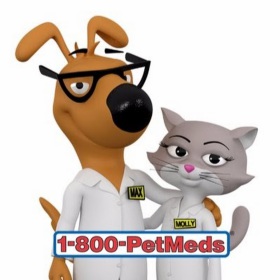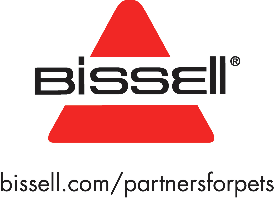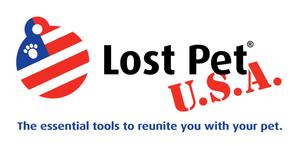Dog Food Protein & It's Amino Acids
(Reprinted with permission)
Protein is one of the most important parts of dog food, as well as one of the least understood by the average dog owner. Most people have the misconception that the amount of protein the food
contains is the important factor. However, the important factor is: How much of the food's protein can be used by the animal consuming it.
To determine the amount of usable protein, we must first break protein down into its component parts. These parts are called amino acids. There are two classifications for amino acids of dietary
protein; (1) essential - those that the dog's own body cannot manufacture in sufficient quantities and (2) non essential - those that the dog's own body can manufacture in sufficient quantities. It
is the presence, balance and quality of the essential amino acids that determines the bio-nutritive value (% of usable protein) of the protein in a dog's feeding program.
All the amino acids, both essential and non-essential, have very specific nutritional jobs within the dog's body; such as the building of the muscle tissue, the regulation of antibodies within the
immune system, and the transfer of nerve impulses etc.
The essential amino acids and some of their functions for a dog are:
ARGININE: This essential amino acid stimulates immune system response by enhancing the production of T-cells, has a protective effect of toxicity of hydrocarbons and intravenous diuretics, is related
to the elevated ammonia levels and cirrhosis of the liver by detoxifying ammonia, and induces growth hormone release from the pituitary gland.
HISTIDINE: This essential amino acid releases histamines from body stores, is associated with pain control, is associated with arthritis, and widens small blood vessels; thus aiding early digestion
by stimulating stomach acid secretion.
ISOLEUCINE and LEUCINE: see VALINE
LYSINE: This essential amino acid promotes bone growth in puppies, stimulates secretion of gastric juices, and is found in abundance within muscle tissue, connective tissue, and collagen.
METHIONINE: This essential amino acid assists gall bladder functions by participating in the synthesis of blue salts, helps to prevent deposits and cohesion of fats in the liver due to lipotropic
function, is related to the synthesis of choline, balances the urinary tract pH (in its dl form), and gives rise to Taurine (an important neuroregulator in the brain).
PHENYALANINE: This essential amino acid stimulates chaleceptokinin enzymes and thus is related to appetite control, increases blood pressure in hypotension, works with minerals in skin and hair
pigmentation, gives rise to Tyrosine, and produces adrenalin and noreadrenalin.
THREONINE: This essential amino acid regulates energy draw requirements, works with Phenylalanine in mood elevation or depression and skin pigmentation, manufactures adrenalin, and precurses Thyroid
hormone.
TRYPTOPHAN: This essential amino acid produces Serotonin that induces sleep, precurses the vitamin Niacin in treating and preventing pellagra, and is a vasoconstrictor that appears to aid in blood
clotting mechanisms. Studies indicate a lack of tryptophan and methionine together can cause hair loss.
VALINE, (ISOLEUCINE AND LEUCINE): These essential amino acids work together and are classified as "branched-chain" amino acids. The three combine to regulate the protein turnover and energy
metabolism, are stored in muscle tissue, and are released to be converted into energy during times of fasting or between meals.
Listed above are the ten amino acids that are essential for a dog's dietary requirements. Note humans only require eight essential amino acids in our dietary intake, and for this reason a dog could
starve if given the same protein sufficient to sustain human life.
Other factors to consider concerning a specific dog's protein requirements are:
(1) The age of a dog can change its protein requirements. Both puppies and geriatric dogs require lower amounts of protein and higher carbohydrate %'s in their food.
(2) The dog's activity level or stress level (due to environment or working conditions) can change its protein requirements.
(3) A bitch during the gestation and lactation period has her own very specific requirements.
(4) The other ingredients within the food can affect the amount of each amino acid required. For example, a food that is highly acidic (due to a preservative) can increase the requirement of the
amino acid Methionine.
The problem of selecting the proper protein blend for a specific dog can be very confusing but can be simplified by applying this single rule: When choosing the protein blend that is best for a
specific breed of dog look for the protein sources that were in that specific breed's native environment and then match them as closely as possible.
When considering an environment's protein sources you should take many factors into consideration. First, with the environment's meat protein sources you should remember to look beyond labels such as
cattle before assuming that they are describing beef. In some parts of the world the term cattle can be referring to a herd of goats, water buffalos, or reindeer. Cattle may not always mean beef from
the state of Texas. Also with each protein source the amino acid balance can be different depending upon the environment from which we take our sample. When testing food sources, we find that herring
from the Pacific Ocean has a different amino acid profile than herring from the Atlantic Ocean. Also, Texas longhorn cattle produces beef with a different amino acid profile than Pennsylvania dairy
cattle beef.
Second, consider all the protein sources of the area to establish if that environment's meat protein is the type of protein that is best for a specific breed. For example; The Chow Chow developed in
an area of China where meat is available as a dietary source of protein. However, the meat source of protein was the Chow Chow and it was available to the humans. The Chow was fed grains to produce a
tender and nicely marbled meat for the human's table. This breed's development as a vegetarian also explains why today's Chow Chow has the jaw and flat tooth structure of a grain eater. Also, why
today's Chow Chow has a body with a high fat to low muscle fiber ratio. Therefore, after considering all the factors for a Chow Chow's dietary protein, it may be best to use only the vegetable
sources of protein found in its native environment.
Third, the amount of each protein source used in a single dog food becomes important since the amount of each source found in a specific environment can be quite different. A breed that developed in
an environment that had few grain crops would need less grain in their food than a breed that developed in an area where grain protein comprised the bulk of their dietary protein intake.
Fourth, the blend of protein sources is important since different sources of dietary protein contain different amounts of both the essential and non-essential amino acids. For example, equal amounts
of lamb meat, beef, fish, chicken, or horse meat from the same environment will contain different amounts of essential amino acids. Sources such as soy, corn, rice, beet, wheat, and alfalfa also
contain very specific amounts of essential and non-essential amino acids in their protein.













